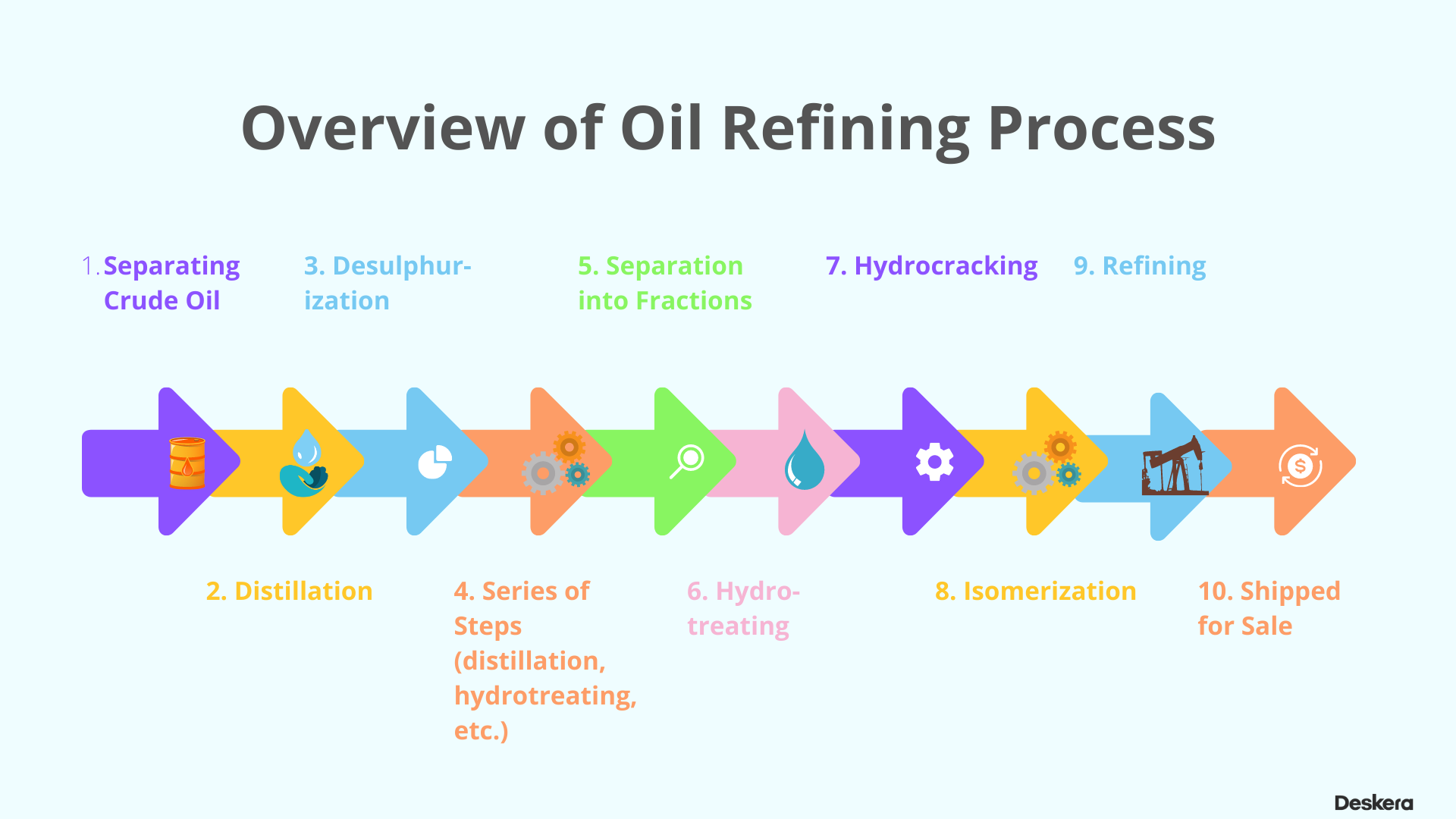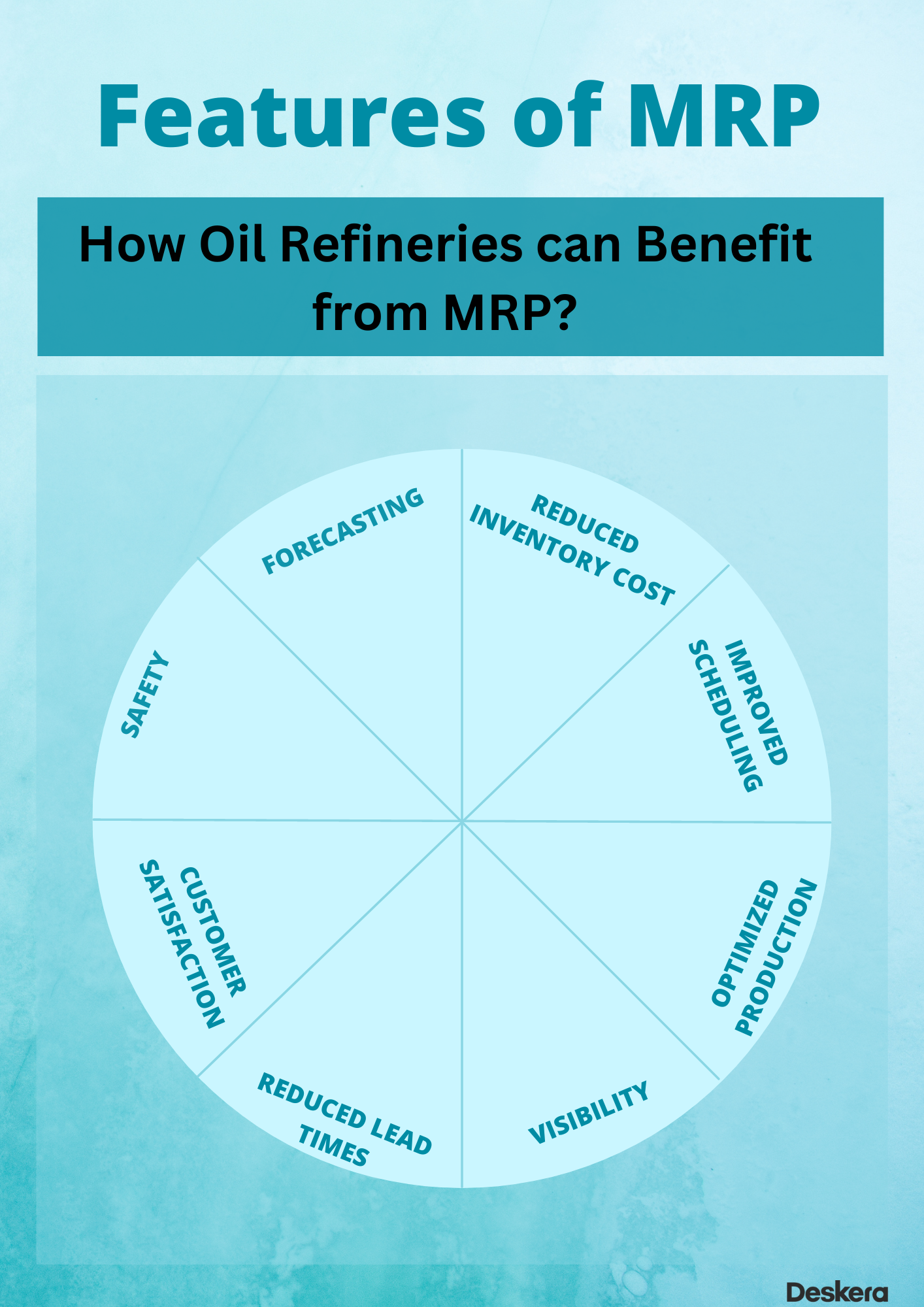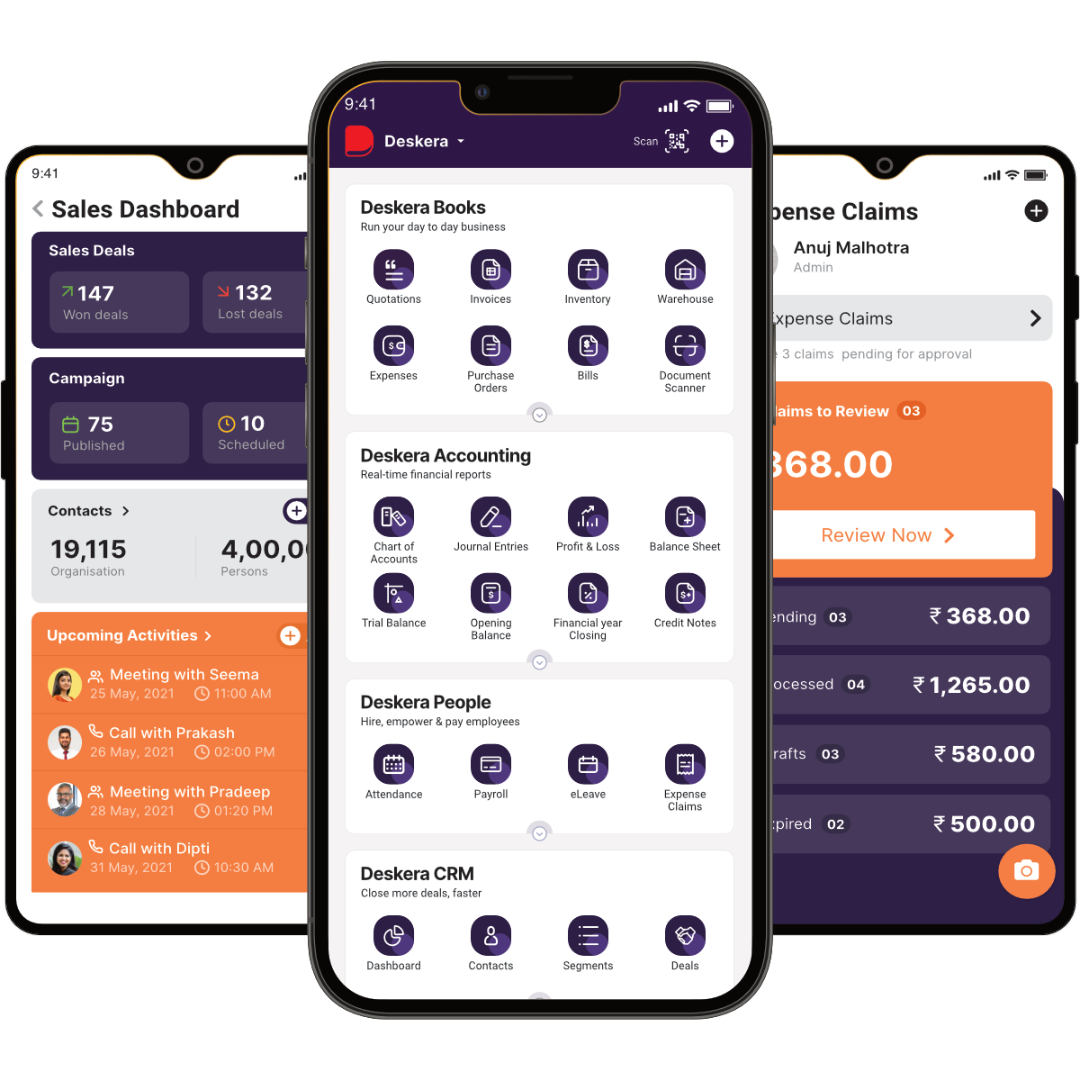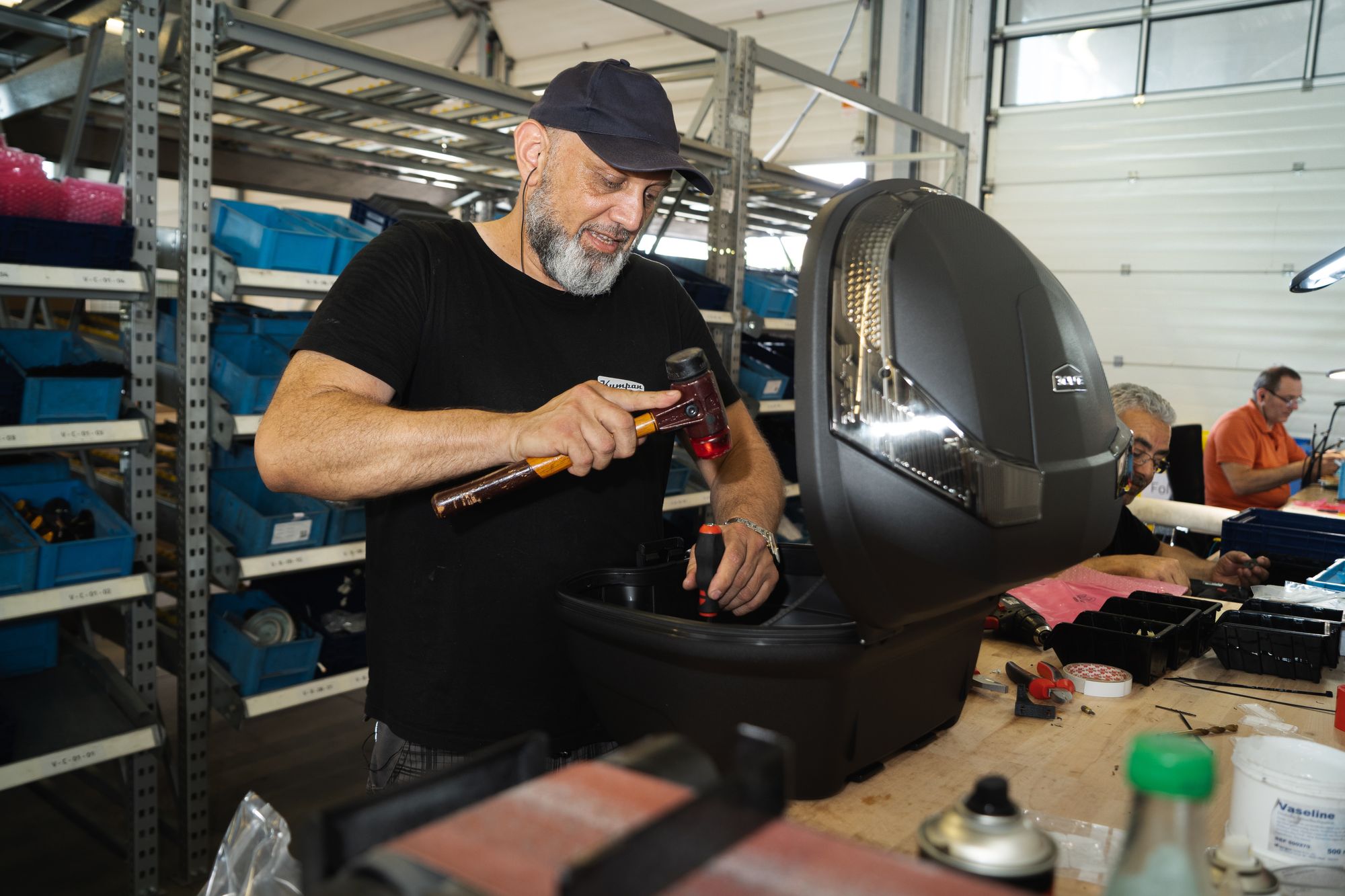According to the US Energy Information Administration, as of December 2019, there were 141 operable petroleum refineries in the United States with a total operable atmospheric crude oil distillation capacity of 18.6 million barrels per calendar day.
MRP, or Material Requirements Planning, is tool oil refineries use to better manage their inventory and production processes. It allows refineries to better predict their material needs in order to ensure that suitable materials are available when needed.

By tracking and anticipating demand, refineries can ensure that they are able to meet customer orders while staying within budget. In addition, MRP helps refineries reduce waste and increase efficiency by providing them with better visibility into their production processes.
This helps refineries reduce costs, increase profitability, and maintain high quality standards. MRP for oil refineries is a powerful tool that can help them better manage their operations.
- What are Oil Refineries?
- Overview of the Oil Refining Process
- Types of Oil Refineries
- Challenges faced by Oil Refineries
- Importance of Storage Tanks in Crude Oil Refinery
- What is MRP for Oil Refineries?
- Benefits of MRP for Oil Refineries
- Implementing MRP for Oil Refineries
- Conclusion
- How can Deskera Help You?
- Key Takeaways
- Related Articles
What are Oil Refineries?
Oil refineries are large-scale industrial complexes that refine crude oil into more useful products such as gasoline, diesel fuel, heating oil, kerosene, jet fuel, asphalt base, lubricating oils, and fuel oils. Refineries also produce other chemicals, such as ethylene and propylene, which are used to make plastics and other consumer goods.
Overview of the Oil Refining Process
Oil refining is a process that involves converting crude oil into useful products such as gasoline, diesel, kerosene, and other fuel oils. The process also involves removing impurities from the crude oil, such as sulfur and other contaminants.

- Separating Crude Oil: The refining process begins with the separation of crude oil into its various components, including gases, light distillates, and heavier fractions.
- Distillation: Next, the light distillates are heated in a distillation column, which separates the crude oil into different fractions. These fractions are then further processed to remove sulfur and other contaminants.
- Desulphurization: The process of removing sulfur is known as desulfurization, and is typically done by passing the oil through a catalytic converter.
- Series of Steps: After desulfurization, the crude oil is further refined through a series of steps, including distillation, hydrotreating, hydrocracking, and isomerization.
- Separation into Fractions: In distillation, the crude oil is heated to separate the different fractions, such as gasoline, diesel, and kerosene.
- Hydrotreating: During hydrotreating, the hydrocarbons are converted into more useful fuels.
- Hydrocracking: This is a process that breaks down large hydrocarbons into smaller ones, which can then be converted into gasoline.
- Isomerization: This is a process that rearranges the molecular structure of hydrocarbons, which can then be used to create gasoline and other products.
- Refining: The last step in the oil refining process is the blending of refined products. This involves combining different fractions of the crude oil to create a fuel with the desired properties, such as octane rating, viscosity, and other characteristics.
- The final product is then sent out for sale.
Oil refining is a complex process that involves a number of different steps, from separation to desulfurization to blending. By understanding the details of the process, oil producers can ensure that their products meet the highest quality standards and provide customers with the fuels they need.
Types of Oil Refineries
Oil refining process may differ marginally owing to the methods deployed by the refinery. Let’s look at the different types of oil refineries.
- Crude Oil Refineries: This type of refinery process separates crude oil into different components and processes them into useful products. It is the most common type of refinery and can process different types of crude oil, such as light, heavy, sweet, and sour.
- Vacuum Distillation Refineries: This type of refinery uses a special distillation process, which is capable of separating out a wide range of hydrocarbons from the crude oil. This process is commonly used for the production of diesel fuel and other fuel types.
- Fluid Catalytic Cracking Refineries: These refineries use a process called fluid catalytic cracking, which breaks down large molecules into smaller ones and produces lighter products like gasoline.
- Hydroprocessing Refineries: These refineries use a process called hydroprocessing, which uses hydrotreating or hydrocracking to convert heavy oils into lighter fuels.
- Coking Refineries: These refineries use a process called coking, which breaks down large molecules into smaller ones and produces lighter products like gasoline and diesel.
- Visbreaking Refineries: These refineries use a process called visbreaking, which uses heat and pressure to break down large molecules into smaller ones and produces lighter products like gasoline and diesel.
Challenges Faced by Oil Refineries
Like every sector, the oil refining sector also faces certain challenges. Some of these challenges further highlight the significance of deploying an MRP.
Let’s look at the challenges here:
Increasing Regulations
Oil refineries are subject to stringent environmental regulations in many countries, including the US, Europe, and China. These regulations can impose significant costs on refineries, including the costs of upgrading equipment, meeting emissions standards, and complying with other requirements.
Increasing regulations are a major challenge for oil refineries as they must constantly adapt to new regulations and industry standards. The oil and gas industry is heavily regulated and these regulations involve safety, environmental protection, and operational management. For example, the Occupational Safety and Health Administration (OSHA) has specific rules and regulations on how the industry should be run, including how to store fuel, the use of safety equipment, and how to prevent hazardous material spills.
Additionally, the Environmental Protection Agency (EPA) has regulations on air and water pollution, as well as on the disposal of hazardous waste. These regulations must be followed in order to operate a refinery, and any violations can result in fines or other penalties.
Regulations drive Investments in Renewable Energy Sources
Increasing regulations could drive the sector to invest in renewable energy sources, such as solar and wind, as well as investing in more efficient technologies. Additionally, refineries must be aware of the effects of their operations on the environment and must ensure that they are following all applicable laws and regulations.
Be Mindful of Penalties
The oil refineries are often wary of the regulations as missing out on any of them could attract heavy fines and penalties. This calls for the need of a system that sets out reminders and notifications to update about the latest changes in the regulations.
Overall, increasing regulations are a major challenge for oil refineries as they must constantly adapt to new regulations and industry standards. Refineries must ensure that they are following all applicable laws and regulations and must also consider changing consumer demands and preferences when deciding how to operate their business.
Volatile Oil Prices
Oil prices are notoriously volatile, and oil refineries must be able to cope with sudden changes in the price of crude oil. This can lead to operational disruptions, such as having to shut down production for periods of time, or having to cut margins to stay competitive.

Volatile oil prices can be a major challenge for oil refineries. The cost of oil is often directly linked to the price of crude oil, which can be extremely volatile. As a result, oil refineries must be prepared to cope with rapid changes in the price of oil.
Financial Concerns
These changes can cause serious financial losses for refineries, as they are unable to accurately predict the future of oil prices.
Find Ways to Mitigate Losses Due to Volatility
Furthermore, refineries must also be prepared to make quick adjustments to their operations in response to changing prices. For example, if prices suddenly drop, they may need to reduce production to mitigate losses. Likewise, if prices suddenly rise, they may need to increase production to take advantage of the higher prices.
In addition, oil refineries must also be prepared to cope with other factors that can affect the price of oil, such as geopolitical events, natural disasters, and changes in global supply and demand.
Aging Infrastructure
Many oil refineries have been in operation for decades, and their infrastructure is aging. This can lead to maintenance issues and costly repairs, as well as safety concerns. Aging infrastructure is a major challenge for oil refineries as it can impede their production and efficiency.
Higher Maintenance Costs
Aging infrastructure can result in a decrease in safety, increased corrosion, and higher maintenance costs.
Unexpected Downtime
As refineries age, their equipment and piping systems become less reliable and may need to be replaced or repaired more often. This can lead to unexpected downtime, increased energy costs, and decreased production.
Risk of Higher Emissions and Safety Concerns
In addition, aging infrastructure can also lead to higher emissions, increasing the impact of the refinery on the environment. Additionally, older refineries often lack the necessary safety features to protect workers from hazardous materials and conditions, putting workers at risk.
Infrastructure Expenses
Finally, the cost of updating aging infrastructure can be prohibitive for refineries. This makes it difficult for them to stay competitive in the market.
High Energy Consumption
Refineries are energy-intensive operations, and rising energy costs can lead to higher operating costs and reduced profits. High energy consumption is an ongoing challenge for oil refineries, as they require a large amount of energy to extract and refine oil.
In addition, energy costs are on the rise, leading to increased financial strain on refinery operations. This challenge is compounded by the fact that refineries must invest in energy-saving technologies, such as insulation and efficient boilers. These techniques shall help them reduce their energy consumption.
Growing Competition
As more countries and regions develop their own oil production capabilities, the global oil refining industry is becoming increasingly competitive. This can lead to lower margins and reduced profits for refineries.
Growing competition is a major challenge for oil refineries, as they compete with other refineries to produce and supply the same products at a lower cost. This competition has been further intensified by the entry of new players in the market, such as renewable energy sources. These elements are increasingly attractive to consumers due to their lower cost and environmental benefits.
Importance of Storage Tanks in Crude Oil Refinery
Storage tanks are vital components of a crude oil refinery. They are used to store a variety of refined products, including diesel, gasoline, and kerosene. Storage tanks are also used to store crude oil, which is heated to separate out the different components.
Eases the process of refining: The heavier components are turned into asphalt, while the lighter components are used to create gasoline and diesel. Without storage tanks, the refinery would not be able to store the crude oil and process it into useful products.
Act as a buffer: Storage tanks provide an important buffer between the refinery and its customers. The tanks can store large quantities of the refined products, allowing the refinery to meet the demands of its customers. This ensures that the refinery can run smoothly and efficiently, with minimal disruption to its customers.
Facilitates safety: In addition, storage tanks are important for safety reasons. They are designed to contain any spills or leaks that may occur and prevent them from entering the environment. This helps to ensure that the refinery and its surroundings remain safe and pollution free. Lastly, storage tanks are essential for economic reasons. They allow the refinery to store large quantities of refined products in anticipation of customer demand. This helps to ensure that the refinery can maintain production levels and remain profitable.
How can MRP help Storage Functionality of Oil Refineries?
MRP system can help storage functionality of oil refineries by helping to ensure that the right amount of materials are available and in the right place at the right time. This will help the refinery in the following three ways:
- to optimize their storage
- minimize inventory costs and
- prevent any storage disruptions
MRP will also provide information about the supply chain, enabling the refinery to optimize their storage to accommodate demand and prevent potential delays. In addition, MRP will help to identify any potential storage risks and provide a platform for proactive planning in order to minimize any potential losses.
What is MRP for Oil Refineries?
Material Requirements Planning or MRP is a computer-based inventory management system that helps manufacturers plan the use of their resources and production activities in order to meet customer demands.
MRP systems track and manage all activities related to purchase, production, inventory, and delivery. They are used to optimize production processes, reduce costs, and streamline operations.
MRP for Oil Refinery
MRPs can be used by oil refineries to plan their production and inventory needs. The system helps refineries to manage their resources in a more efficient manner and ensures that they have the necessary materials available to meet their production needs.
MRP systems can help oil refineries in multiple areas, such as production planning, inventory control, order fulfillment, and scheduling. MRP systems can help refineries plan and manage the production of oil based on demand and ensure that suitable material is available at the right time.

MRP systems can also be used to track inventory levels and optimize order fulfillment, ensuring that orders are delivered in a timely manner. Additionally, MRP systems can help oil refineries with scheduling, ensuring that operations run smoothly and efficiently.
- Improved forecasting: MRP systems can help oil refineries to accurately forecast demand for their products, thereby reducing the risk of overstocking or understocking.
- Reduced inventory costs: MRP systems can help oil refineries track and optimize their inventories, resulting in reduced inventory costs.
- Improved scheduling: MRP systems can help oil refineries to improve their scheduling of production activities and processes, resulting in improved throughput and delivery times.
- Optimized production: MRP systems can help oil refineries to optimize their production processes, resulting in increased efficiency and improved product quality.
- Improved visibility: MRP systems can help oil refineries to have better visibility over their operations, enabling them to have better and more accurate data on which to base decisions.
- Reduced lead times: MRP systems can help oil refineries to reduce lead times by better scheduling and tracking of resources and materials.
- Increased customer satisfaction: MRP systems can help oil refineries to better meet customer expectations by providing better service and delivery times.
- Improved safety: MRP systems can help oil refineries to better manage and monitor safety-critical activities and processes, resulting in improved safety for employees, customers, and the environment.
Benefits of MRP for Oil Refineries
We have seen the struggles and challenges faced by the oil refinery sector. MRP systems can play a pivotal role in reducing the existing challenges for the sector. Implementing the system can be a game changer. Let’s see how.
Manage Resources and Address Growing Competition
MRP can help oil refineries to better manage their resources, optimize their production processes, and increase their efficiency. By effectively utilizing their resources, refineries can become more competitive in the market by reducing costs and increasing throughput.
MRP can also help refineries to better anticipate customer demand, forecast supply, and demand, and adjust production accordingly. Additionally, MRP can help refineries to better track their inventory and optimize their supply chain, which can help them to better compete with their competitors.
Introduce Techniques to Combat Energy Consumption
MRP can help reduce energy consumption in oil refineries by implementing the following:
- Optimizing production schedules and reducing idle times.
- Utilizing predictive analytics to forecast demand, allowing refineries to adjust production levels accordingly.
- Implementing inventory optimization and reducing storage costs.
- Automating processes and reducing manual labor.
- Identifying and eliminating energy inefficiencies.
- Increasing visibility and management of energy consumption data.
- Leveraging automation and artificial intelligence to identify additional energy savings opportunities.
Track Compliance with Regulations
MRP can help oil refineries to become more compliant with increasing regulations by providing visibility into the materials and resources used in the refinery process.
- It can provide the necessary data to make sure that the refineries are utilizing the correct processes and materials. Thereby, ensuring that they remain compliant with the regulations.
- Additionally, MRP can help to identify areas where improvements can be made to reduce environmental impacts and increase efficiency. This can help to reduce the costs associated with compliance, as well as to improve safety and operational performance.
- Finally, MRP can help to ensure that all materials and resources are used efficiently and effectively, reducing the amount of waste generated and helping refineries to meet their environmental targets.
Infrastructure and Asset Management
MRP can help oil refineries manage their infrastructure aging and deterioration by streamlining the process of managing inventory, resources, and schedules. MRP can help identify which components need to be replaced and when, as well as help oil refineries plan and track maintenance and repair activities and schedule preventive maintenance tasks.
MRP can also help refineries minimize downtime by providing timely notifications when components are reaching their end of life so that steps can be taken to replace or upgrade them before they fail. Finally, MRP can help refineries reduce costs by leveraging better inventory control, scheduling, and optimization techniques.
MRP can be beneficial for inventory management in the following ways:
- MRP can help to accurately predict demand and forecast future needs, which can help to ensure the right amount of inventory is available.
- MRP can provide information on the raw materials required and the amount of inventory needed to produce products.
- It can help to identify inventory shortages and surpluses, thus ensuring that inventory levels are kept at an optimal level. It can also help avoid dead stock.
- MRP can also provide information on what products to procure and when thus helping to reduce the amount of downtime and cost associated with producing a product.
- It can provide information on what is the most efficient way to use the available resources to meet demand.
- MRP can also provide information about the lead time for ordering raw materials and production, thus helping to reduce the risk of running out of inventory.
Production Planning and Scheduling
MRP systems can help oil refineries with production planning and scheduling by streamlining and automating the planning and scheduling process. MRP can generate accurate production schedules and estimates for the refinery's production activities, taking into account the availability of resources, inventory levels, and other factors.
This helps ensure that the refinery has the right resources in the right place at the right time to maximize efficiency and minimize downtime.
MRP systems can also provide visibility into the production process, allowing refinery managers to track the progress of tasks and activities in real time. This helps with planning and scheduling decisions, such as when to order more raw materials and when to adjust the production schedule to meet changing demands.
Improve Customer Service
An MRP system can help oil refineries with CRM (Customer Relationship Management) by providing them with a centralized platform to manage customer relationships. This platform can provide a comprehensive view of customer information and trends.
This data enables refineries to target, monitor, and analyze customer data.
Insights into Customer Behavior
Additionally, the MRP system can provide automated processes to streamline customer interaction and generate timely reports on customer requirements and behaviors. Thus, allowing refineries to react quickly and respond to customer needs.
Integrate Customer Information
Finally, an MRP system can help oil refineries with CRM by integrating customer data with other enterprise systems, such as production, inventory, and accounting. This integration allows refineries to quickly and accurately track sales, customer persona, and other vital metrics to make informed decisions and maximize customer satisfaction.
Implementing MRP for Oil Refineries
There are several steps the corporations must be mindful of while implementing an MRP system.
- Gather Relevant Data: Gather all the necessary data related to the oil refinery, such as the raw material inventory, production capacity, sales forecasts, bill of materials, lead times, and safety stock information.
- Estimate Demand: Estimate the demand for the finished goods, raw materials, and components that the oil refinery produces.
- Create a Master Production Schedule: Create a master production schedule that outlines the production plan for each product over the given time frame.
- Determine Material Requirements: Determine the material requirements for each product based on the master production schedule and the bill of materials.
- Generate a Material Requirement Plan: Generate a material requirement plan that outlines the quantity of each raw material, component, and finished good required to meet the demand.
- Monitor and Adjust Inventory Levels: Monitor and adjust inventory levels as needed to ensure that the material requirements are met in a timely manner.
- Track Production and Delivery: Track production and delivery of materials to ensure that the material requirements are met in a timely manner.
- Re-evaluate MRP: Re-evaluate the MRP system periodically to ensure that it is still effective and efficient.
- Implement Continuous Improvement: Implement continuous improvement efforts to ensure that the MRP system remains effective and efficient.
- Leverage Technology: Leverage technology such as enterprise resource planning (ERP) systems to automate the MRP process and ensure accuracy.
Conclusion
In conclusion, it can be seen that MRP for oil refineries is an effective and efficient way to manage their inventory and production operations. It ensures that the right resources are available at the right time to meet customer demand and helps to reduce the total cost of production.
MRP also helps to reduce the risk of production delays and shortages, while providing better visibility into the production process. This can lead to increased customer satisfaction and improved profits. Overall, MRP is an essential tool for oil refineries to ensure that they are able to maximize their efficiency, minimize their costs, and remain competitive in the industry.
How can Deskera Help You?
Deskera provides a comprehensive suite of cloud-based software solutions to help oil refineries manage and streamline their operations. Deskera's integrated enterprise resource planning (ERP) software helps automate and optimize core business processes, including inventory management, order tracking, supplier management, financial planning, and customer relationship management.
Additionally, Deskera's analytics and reporting tools can be used to gain insights into operational performance and make more informed decisions. Finally, Deskera's mobile app allows refinery personnel to access the system remotely, giving them the flexibility to monitor their operations anytime, anywhere.

Deskera MRP is the one tool that lets you do all of the above. With Deskera, you can:
- Track raw materials and finished goods inventory
- Manage production plans and routings
- Maintain bill of materials
- Generate detailed reports
- Create custom dashboards
Deskera Books is a simple cloud-based accounting and bookkeeping software that helps small and medium-sized businesses manage their finances more effectively.
Deskera People is a complete human resource management solution that can help you manage your staff and HR functions. These include employee profiles, attendance tracking, payroll, performance reviews, leave management, and reporting features.
Deskera CRM is a cloud-based customer relationship management (CRM) software designed to help businesses optimize their sales and customer management activities.
Key Takeaways
- Oil refineries are large-scale industrial complexes that refine crude oil into more useful products such as gasoline, diesel fuel, heating oil, kerosene, jet fuel, asphalt base, lubricating oils, and fuel oils.
- Oil refining is a process that involves converting crude oil into useful products such as gasoline, diesel, kerosene, and other fuel oils.
- The process also involves removing impurities from the crude oil, such as sulfur and other contaminants.
- Oil refining is a complex process that involves a number of different steps, from separation to desulfurization to blending.
- Increasing regulations, volatile oil prices, aging infrastructure, and growing competition are some of the fundamental problems the oil sector faces.
- Material Requirements Planning or MRP is a computer-based inventory management system that helps manufacturers plan the use of their resources and production activities in order to meet customer demands.
- MRPs can be used by oil refineries to plan their production and inventory needs. The system helps refineries to manage their resources in a more efficient manner and ensures that they have the necessary materials available to meet their production needs.
- MRP systems can help oil refineries in multiple areas, such as production planning, inventory control, order fulfillment, and scheduling.
- Improved forecasts, improved inventory management, and improved scheduling are some of the benefits of MRP.
- An MRP system also helps reduce lead times, optimizes production, and guarantees safety for the workers at the refineries.
- MRP can also help refineries to better anticipate customer demand, forecast supply, and demand, and adjust production accordingly.
- MRP can help oil refineries to become more compliant with increasing regulations by providing visibility into the materials and resources used in the refinery process.
- MRP can also help refineries minimize downtime by providing timely notifications when components are reaching their end of life so that steps can be taken to replace or upgrade them before they fail.
- MRP systems can help oil refineries with production planning and scheduling by streamlining and automating the planning and scheduling process.
- An MRP system can help oil refineries with CRM (Customer Relationship Management) by providing them with a centralized platform to manage customer relationships.
- Implementing MRP for oil refineries can involve several steps, but it could be fruitful in the long run.
Related Articles













